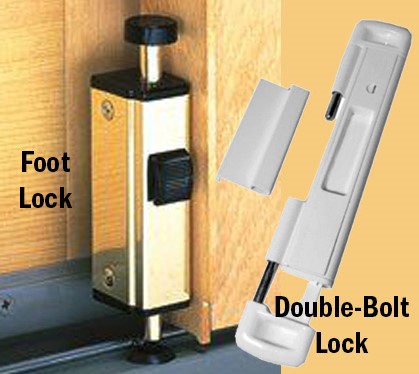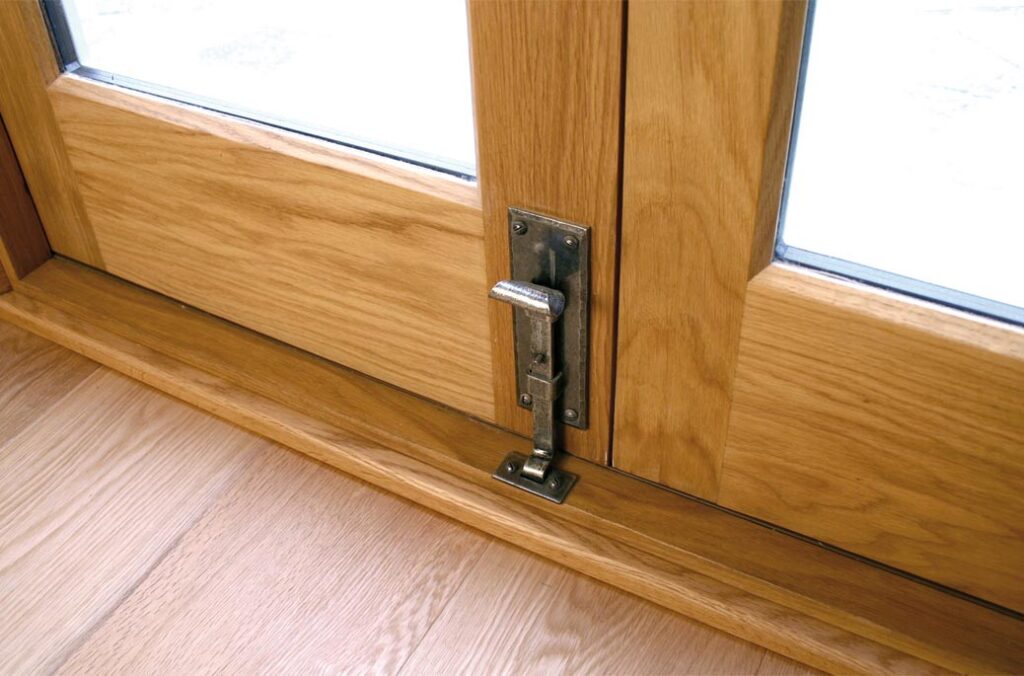Entry Door Security
Entry Door Security
We all want to prevent home burglaries. According to security experts, most burglars are opportunists who look for easy, quick ways into a home. A homeowner’s first line of defense should be a strong door, door frame and deadbolt lock on each exterior door. Following are some entry door security tips:
Lock all doors
It doesn’t matter how good your locks may be; they are of little value if you don’t use them. It is important to keep ALL your entry doors locked (front, back and side doors) at night or whenever you are out of the house – even for “just a few minutes.”
Deadbolt lock
A deadbolt lock is the most secure form of lock. You should be sure that every deadbolt lock has a strong throw bolt that is reinforced by a strong metal strike plate. Replacing existing strike plates with heavier ones may be advisable.
If you are thinking of purchasing a new deadbolt, you may want to engage a locksmith to provide a professional grade model that is impervious to “lock bumping.” That is a form of burglary in which the burglar uses a specially made bump key that can open any door. And be sure that the lock is installed with long screws that go deep into the door and the opposing door frame.
Steel-clad or heavy wooden door
Most security experts recommend steel clad exterior entry doors. The strongest ones have cores of solid wood or wood material. If you prefer a wooden door, the most secure are made of solid hardwood with no recessed panels. Recessed panels are vulnerable to kick-ins.
Door frame reinforcement
The weakest point for any entry door is usually the doorframe, itself. When a door-kick burglar forcefully kicks or throws all his weight against the door, the thin wooden doorframe usually splits and breaks away.
Replacing the short screws that hold the deadbolt strike plate in place and installing longer screws that go into the 2×4 frame beneath can help. But for the best security, you can purchase a steel plate system that overlays your door jamb with a thin piece of metal that reinforces a large section of the doorframe.
A number of such systems are on the market. One of the most highly rated is the StrikeMaster Pro II, which is available online for under $100 and can be installed by most do-it-yourselfers. CLICK HERE to see a video about the system.
French doors
The weakest home entry doors are French doors. They are easily kicked in. In most cases, the built-in locking hardware is insufficient to prevent such a kick-in. Instead, you can purchase surface-mounted vertical sliding bolts and install them on the inside at the top and/or bottom of the stationary door. The bolts either slide into a matching hole in the floor or a metal housing attached by long screws that are driven into the upper 2×4 door frame. When properly installed, these bolts make it very difficult to kick open the stationary door.
You also should ensure that the deadbolt on the active door has a long throw that goes well into the stationary door and that the latch areas of both doors are hardened with a steel plate.
French door reinforcement kits are available for under $100 on Amazon.

Sliding glass doors
Sliding glass doors are another point of vulnerability. As with French doors, the hardware that comes with a sliding glass door set is often inadequate. However, there are many after-market devices that can do the job.
One is a foot lock that is installed at the bottom of the sliding door and has a bolt that slides into a hole in the track. It is activated by pushing down on the locking mechanism and deactivated by bumping a release button.
A common homeowner security practice is to place a wooden dowel into the bottom track to prevent the active door from being slid open. However, a study conducted by the city of Chula Vista in Southern California some years ago found that this does NOT keep burglars out. Experienced burglars know how to lift the active door out of its track, instead. The best way to prevent this is to install channel and pin locks that make it difficult to lift up the door.
Some homeowners simply drill holes into the upper door track just above the top of the active door (being careful to allow room for the door to slide open and shut) and insert screws into them. The screws make it difficult to lift the door out. However, you may prefer to install a double-bolt surface lock that ties the active door to the adjacent door jamb so it cannot be lifted or pulled open. Such inexpensive devices can be found in home centers and online and are easily installed by a homeowner.


